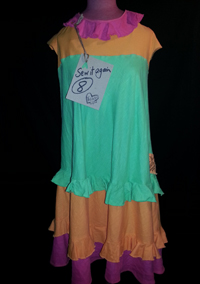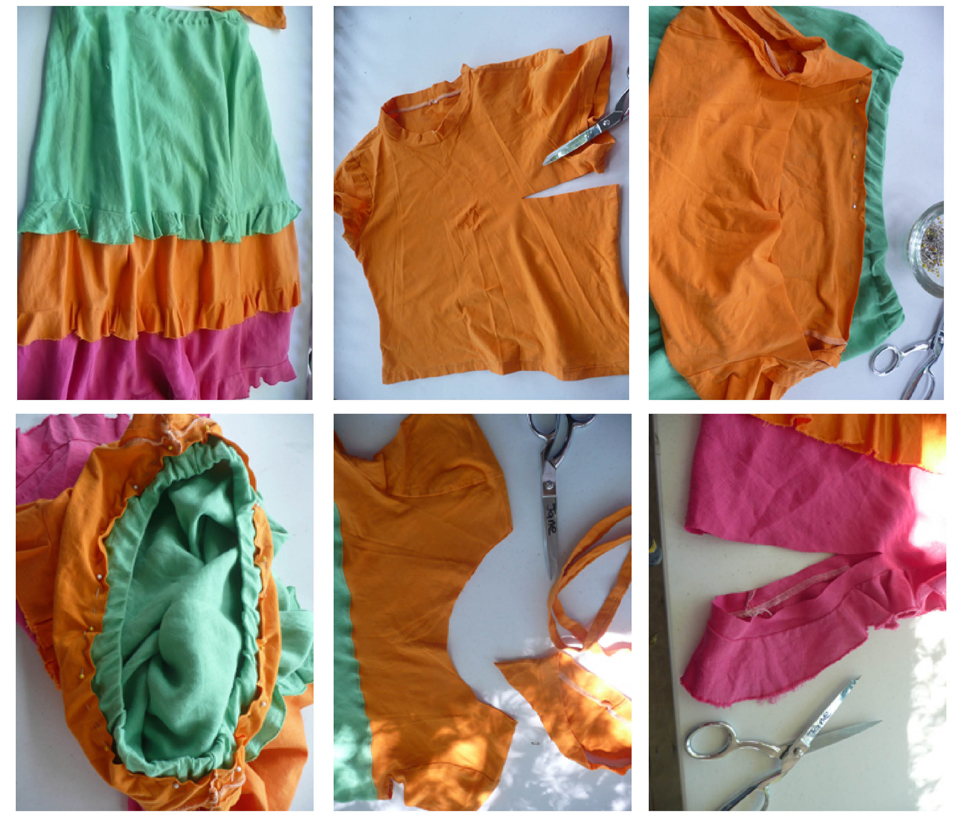 This garment began life as a block-coloured linen skirt cut on the cross, which I’ve upcycled into a cool summer dress.
This garment began life as a block-coloured linen skirt cut on the cross, which I’ve upcycled into a cool summer dress.
I grew up in a farming family, born of parents who came through the depression and learned to be resourceful. We grew our own vegetables and Dad butchered the meat on the farm in Otago, New Zealand.
Society’s resurgent interest in home-cooking reflects our re-valuing of the nutritional, seasonal, creative and pleasurable aspects of cooking wholesome food in the home.
I learned to cook and bake in our Great Grandma’s kitchen in the cottage. I learned to sew, knit and crochet with Nana – and I later learned other crafts like spinning wool and making paper from my aunt Kate McLachlan.
Home-sewing is a life skill akin to home-cooking. While we do not want to make complex clothing from scratch when there’s a fairly high likelihood of failure, it is handy to know how to sew on a button, mend or alter a hem, and make basic adaptions to extend the life of our clothing.
Being able to sew is empowering – it gives you choices in the garments you wear because you are not restricted to what you can buy in stores or online and you can choose and change styles and shapes to flatter.
I sewed a lot when my children were little (many moons ago), but now I’ve discovered the shortcuts available through upcycling existing garments.
There are amazing natural resources within our own wardrobes, our friends’ wardrobes, and opportunity shops groaning under the weight of the mountains of clothing we are tossing away as we move on to the next fast-fashion trend which has obsolescence built-in.
The idea of styles being ‘so last year’ and therefore deemed unwearable is unsustainable. And it’s why I am making it my business for the 365 days of this year to demonstrate a different way of utilising clothes.
Resewing, recreating, or refashioning outfits requires a little time and ingenuity, but will expand your clothing choices and develop your creativity.
Today’s creation was a skirt with a tired elastic waist which I sewed on to the top part of a cotton-lycra gym shirt. It pays to pin the two garments together before sewing (pin each into quarters, and then match the pins), so you can spread the fabric evenly around the join. I topstitched with zigzag. I then cut the bottom off the skirt to make it shorter and added part of that frill around the enlarged neckline of the shirt. I cropped the sleeves and left as is, because lycra doesn’t fray.

I love the colours in this refashioned garment, and an interesting back story, Jane. Jo
Looks great love the bright bold colours
I bought this dress from Reverse Garbage at Bourke Street Woolloongabba. I love it and my family love it on me. I have orange sandals and coloured beads. Looks fabulous.
I will be on the lookout for more of these outfits. Fabulous idea.
Maree – that is wonderful. Can you send a photo please? Email it to to me jane@textilebeat.com Thanks for the great feedback. J